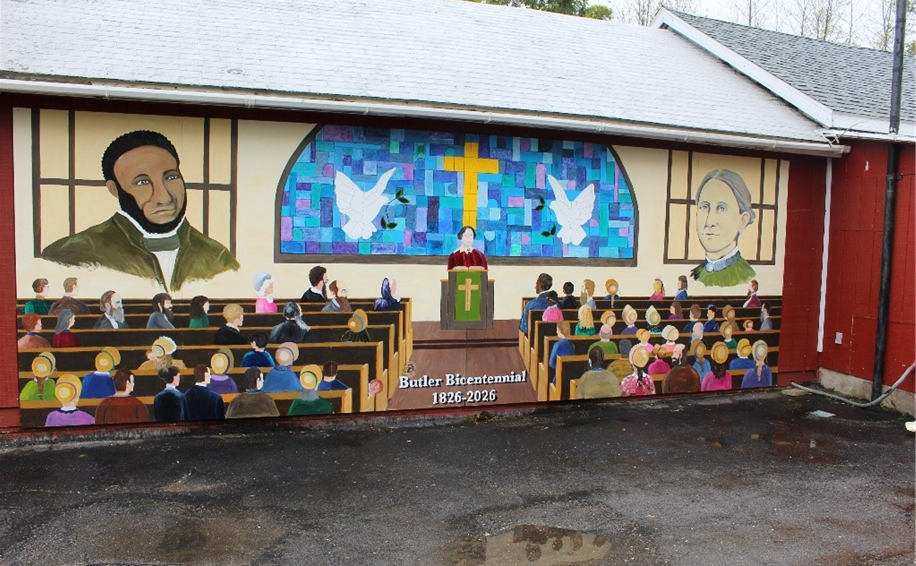There isn’t much to South Butler these days.
The village, such as it is, gathers around a crossroads. There are two small churches, a Disciple of Christ and a Methodist, directly across from one another on the north/south road.

At the road’s intersection with the east/west road there is a new fire station and the Post Office.
Within my lifetime, up to nearly a quarter century ago, four buildings stood, one on each corner of that crossroads. Today only one survives. In that building, some years ago, enterprising people opened a coffee shop. All that now remains of their ambitions is a tattered nearly illegible sign hanging over the front.
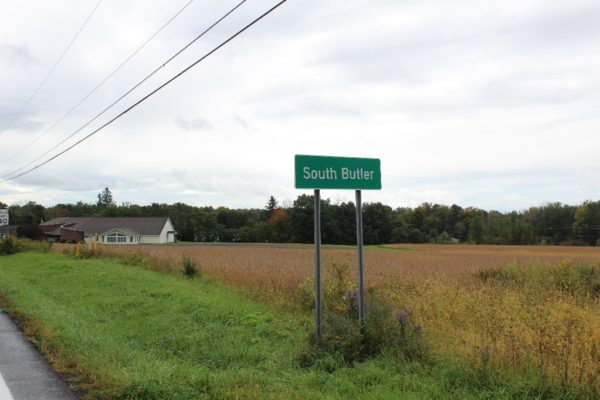
South Butler is not the little town that time forgot. Time, alas, forgets no one, time forgets nothing.
Houses scatter along the four roads, but in each direction the village quickly fades into farmland: gently rolling hillsides of corn and wheat and cow-freckled pasture.
And, of course, there is the cemetery on the south side of the village.
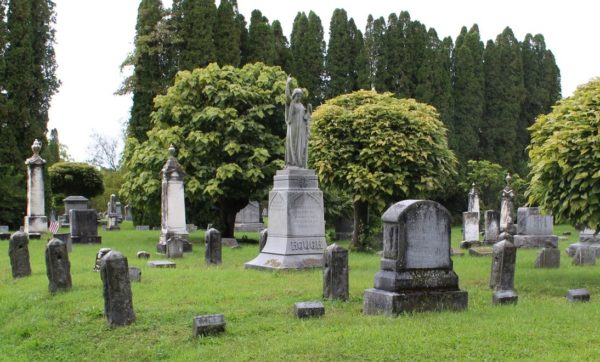
Coming into the village from the south the cemetery is really the only noteworthy site. It is rather pretty: close-cropped yews and magnolia trees and headstones in clusters of time. Close to the road the headstones are mainly early nineteenth century. Single hands with index fingers pointing to heaven. Weeping willows. Breath-catching, small lambs atop stones marked, “our infant,” or “dear baby.”
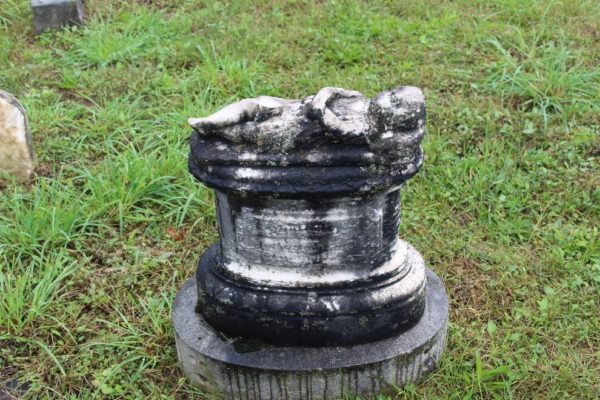
Farther from the road in the center and topping the highest rises, mid- and later nineteenth-century obelisks and large solid granite stones betoken the self-confidence of the period. The more recent and more decorously discrete stones fan out along the farther and lower edges. There are more people dead in the cemetery now than there are alive in the village.
The village never amounted to much. It was always in the wrong place at the wrong time.
Wolcott, seven miles to the north, had the good sense to settle on the crossroads of the major arteries linking Syracuse and Rochester. Wolcott also got the railroad. And the canals, particularly the Erie Canal, dug much farther south.
Because of this habit of missing the boat, South Butler and its sibling Butler Center have always had an inferiority complex. Writing in the 1870s, “Professor McIntosh” observed of the Butlers:
“Save excellent land, the expectations of Butler’s early settlers were never realized.” He later adds, “Butler was still destined to isolation …The streams of emigration passed on, leaving the town ‘unkowning and unknown.”
A century later in 1979, the self-designated town historian Howard Williams claimed, in a section of his historical book entitled, “Partly a Lament of the Dearth of Illustrious Personages in the Town,” that Butler was “simply a backwater area”
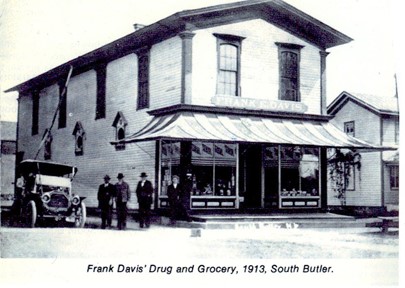
But, improbably, something did happen here that sets Butler, and South Butler in particular, apart.
According to McIntosh’s “History of Wayne County,” the South Butler Presbyterian Church underwent radical changes in the 1840s:
“There was a Presbyterian Church organized under the auspices of the presbytery of Geneva in 1831, and in 1836 a church edifice was erected (the first one in the town) at South Butler … In 1841 the church withdrew from the presbytery, its leading members becoming more ‘liberal,’ and desiring congregationalism. It then proceeded formally to require of its members ‘total abstinence from intoxicating drinks’; and in 1842 it resolved that ‘with slaveholders and apologists of slavery’ it would hold no fellowship.”
“Samuel R. Ward, a colored man, preached there about two years, in 1841-43. In 1845-46, Lewis C. Lockwood and James Gregg; and in 1853, Antoinette L. Brown. She was ‘installed’ as pastor of the church (authority by any one to ‘ordain’ being disclaimed and denied) by a speech from Gerritt Smith. Thence the organization languished, and, as several of the members joined the Presbyterian church at Savannah, finally ceased to exist.”
At first glance, the names in the second paragraph above might strike few intriguing bells. Samuel Ringgold Ward. Antoinette Brown (Blackwell). Gerrit Smith.
These are names to be reckoned with. All three were major players in the social reform movements that swept the Northern states in the Antebellum years.
Ward is described in the “Dictionary of American Negro Biography” as “a tall, imposing figure with notable eloquence and impassioned gestures.” His abilities as a speaker and champion of the abolitionist cause and the rights of African Americans were notable:
“[He] attracted the attention of such influential abolitionists as Gerrit Smith and Lewis Tappan … During his American career, [Ward] and Charles Lenox Remond were acclaimed the most famous spokesmen, after Frederick Douglass, for Negro rights. He was frequently referred to as ‘the black Daniel Webster.'”
Ward was born in Maryland of slave parents who fled to New Jersey and then New York City. There Ward was educated and began his career as a preacher and public speaker. As the “Dictionary of American Negro Biography” notes:
“Ward was appointed traveling agent of the American Anti-Slavery Society in 1839, and in the same year was licensed to preach by the New York Congregationalist (General) Assembly.”
After preaching in South Butler for two years (1841-1843) he studied medicine in Geneva, New York, for a year, and then resumed his abolitionist activities. He took part in a rescue of an escaped slave in 1851 and fled to Toronto. From there he sailed for London where he settled in 1853. In London he began work on what eventually became an autobiography, entitled: “Autobiography of a Fugitive Negro: His Anti-Slavery Labours in the United States, Canada, & England.” It was published in London in 1855. Ward died in Jamaica in 1865 or 1866.
Antionette Brown Blackwell was a close associate and confidante of Lucy Stone, Susan B. Anthony, Elizabeth Cady Stanton, Gerrit Smith and Horace Greely. She was a graduate of Oberlin College and became famous as a speaker on causes ranging from Abolition to Temperance and, most powerfully, women’s rights. And, as McIntosh’s “History” suggests, she was “the first woman regularly ordained in the State [New York]” (79).
McIntosh claims that she served in South Butler for many years, when, in fact, she was with the local Congregational church for little over a year. She arrived in South Butler in the spring of 1853. She was ordained there on September 15, 1853. Owing to poor health and mental and emotional exhaustion, she resigned her pastorship in July of 1854, according to Elizabeth Cazden in her 1983 book “Antoinette Brown Blackwell: A Biography.”
Ward wrote fondly of his South Butler experiences, although he suffered there. In his Autobiography, Ward notes that, “I look back to my settlement among that dear people with peculiar feelings.”
He describes those feelings and their source in some detail:
“It was my first charge: I there first administered the ordinances of baptism and the Lord’s supper, and there I first laid hands upon and set apart a deacon; there God honoured my ministry, in the conversion of many and in the trebling the number of the members of the Church, most of whom, I am delighted to know, are still walking in the light of God. The manly courage they showed, in calling and sustaining and honouring as their pastor a black man, in that day, in spite of the too general Negro-hate everywhere rife (and as professedly pious as rife) around them, exposing them as it did to the taunts, scoffs, jeers, and abuse of too many who wore the cloak of Christianity–entitled them to what they will ever receive, my warmest thanks and kindest love.”
Ward added,
“I seriously believe that the prejudice of the whites against Negroes is a constant source of temptation to the latter to hate the former. I also believe that that same prejudice will aggravate the perdition of both: and I pray, therefore, that my people [blacks] may be saved from that hatred, and made forgiving; and for the whites of America, my highest wish is that they may all become like the people of South Butler.”
Ward developed a throat ailment which prevented him from speaking. He resigned his appointment and settled in Geneva to be under the care of doctors there, and to study medicine with them.
Antoinette Brown had more mixed feelings about her South Butler experience. In a letter to Gerrit Smith, she claimed that “The pastoral labors at S. Butler suit me even better than I expected & my heart is full of hope.” But she later reflected:
“My little parish was a miniature world in good and evil. To get humanity condensed into so small a compass that you can study each individual member opens a new chapter of experience. It makes one thoughtful and rolls upon the spirit a burden of deep responsibility.”
As she admitted later, she was not suited for the particular pressures of being a minister to a small rural congregation. Deep spiritual doubt and emotional strain combined to make her position in South Butler unsupportable. She resigned claiming to suffer from a kind of “brain fever” according to Cazdan. Nonetheless, she remembered her South Butler congregation as a fairly enlightened liberal group.
A correspondent for Horace Greeley’s New York Tribune filed this report from South Butler on August 23, 1853 about the village and its people:
“I have from time to time seen, in your excellent journal, many a letter from the ‘Rural Districts,’ written by an excursionist, but never one from this place, and I have often wondered at the omission. This is an inland village, situated in the southern part of the town of Butler, in the eastern part of Wayne County, about six miles south of Wolcott, seven miles north-east of Clyde, twelve miles north-west of Port Byron, and three miles north of the Direct Railroad from Syracuse to Rochester. It contains a saw and grist-mill and a large furnace and plow-factory, all of which are worked by steam–a tannery, a large number of mechanics of all sorts, two dry goods stores, a Temperance hotel, four male and two female physicians, one justice of the peace, a large and flourishing school, and three churches–a Baptist, a Campbellite, and a Congregational, over the latter of which the world-renowned Rev. Antionette L. Brown has settled as pastor for one year from June last. On the 14 inst. I heard her deliver two highly interesting discourses, but the church edifice, being only of the ordinary size of country churches, is not of sufficient magnitude to seat one-third of the people who usually come to listen to her eloquent exposition of the Scriptures. Last Sabbath morning the desk was occupied by the Rev. Miss Pellet of Syracuse (or near there) who delivered an excellent discourse from the first 12 verses of the 3d chapter of Matthew.
“The people here have the name of being far ahead of any other in the ‘Empire State’ in ‘Modern Reforms.’ It is here that the Rev. Samuel R. Ward (black man) was ordained and installed as pastor of a church in 1841, and where he remained as such two and a half years or more–himself and his wife being the only colored persons belonging to the church. Down to 1840 most of the inhabitants were Whigs, but since that time very many have become ‘political Abolitionists’ of the most frantic and rabid kind. Large and enthusiastic meetings in favor of the ‘Maine Law,’ real freedom, ‘Women’s Rights,’ & c. are frequently held, which are addressed by Miss Brown and others. Quite a large number of copies of The Tribune are taken here, and more would be, were the mails as regular as they should be. —R. S. R.
Today you can’t even get the local Red Creek Herald, much less The New York Times in South Butler.
On September 22, 2022, the Butler Historical Preservation Society unveiled a mural celebrating the work of Samuel Ringgold Ward and Antoinette Brown Blackwell. It is the first public, official recognition of Ward and Brown Blackwell in South Butler.
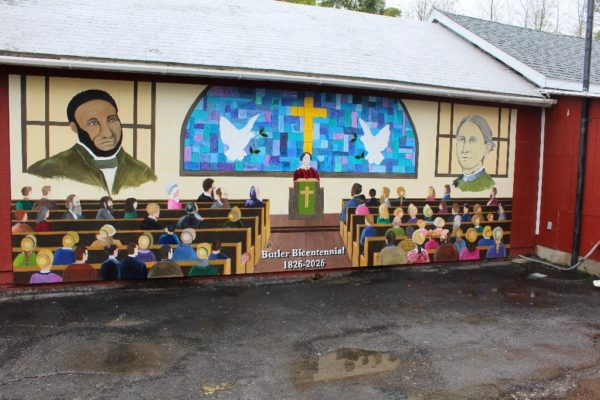
What is odd, though, about the mural is the location the Society chose to hang it. Rather than having it placed in the village near to the site of the vanished church where they preached, the mural hangs on the side of an abandoned convenience store some four miles north of the village.
The old store sits at a crossroads: take the north-south road farther north for four miles or so and you are in Wolcott. If you take the right turn and head west in about 3 miles you’ll be in Butler Center. The only neighbors for the mural’s site are an electric power substation across the road, a marshy swamp wetland area just north on the same side of the road and catty-corner from the site an historical marker noting the grave site of the “first woman to die in Town of Butler.”
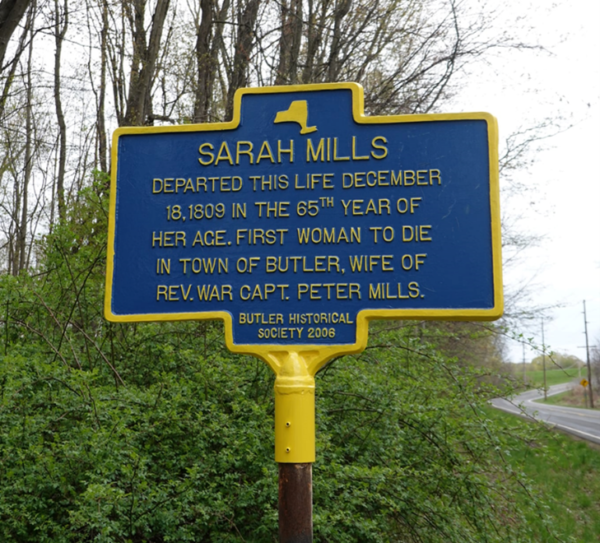
Four days after the unveiling, on a cloudy rainy Monday, I parked in the gravel and dirt lot of the abandoned store. I had brought a lunch and so spent 45 minutes or so eating and taking pictures. During that time, I counted a total of five vehicles passing — three semi-tractor trailers carrying harvested beans, a large farm tractor and one pick-up truck. None of them slowed to look at the mural.
The mural seems especially vulnerable there on the wall of an abandoned wooden structure at the edge of a dirt and stone lot along the edge of a road leading through swamp and pasture. Exposed and lonely.
With one wind storm, one misplaced burning cigarette, one car veering off the road at night as has happened at that very crossroads, Samuel Ringgold Ward and Antoinette Brown Blackwell would vanish back into obscurity in South Butler.
David DeVries retired from Cornell University where he served as associate dean for undergraduate education in the College of Arts and Sciences. He has a life-long fascination with the Finger Lakes and western New York, particularly its nineteenth century history as the so-called “Burned Over District.” This fascination stems partly from the fact that his mother’s family had settled in South Butler and the Wolcott area in the first decade of the nineteenth century. This piece is adapted from a longer work entitled “Reading the Slates,” a cultural memoir.

